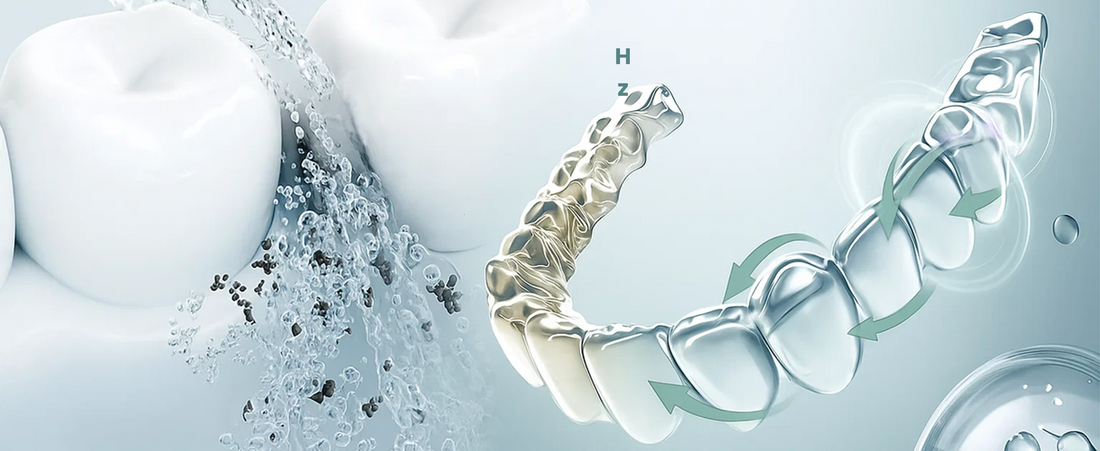I still remember the morning I realized my aligner didn’t feel fresh. I was rinsing it in hot water, brushing it with toothpaste, and occasionally using a fizzy cleaning tablet. No matter what I tried, it stayed cloudy and left a faint aftertaste. That was the moment I started experimenting with ultrasonic cleaning, and it completely changed the way I care for my dental appliances.
Why cleaning retainers matters
Retainers, aligners, and night guards spend hours pressed against our teeth. They collect plaque and bacteria, but unlike teeth, they don’t benefit from saliva or regular brushing throughout the day. If you don’t clean them properly, they can become cloudy, cause bad breath, and even irritate your gums. With more adults wearing retainers long-term, keeping them truly clean is about more than just appearances—it’s about health and comfort.
Comparing cleaning methods
When I first started, I relied on old habits. Brushing with toothpaste seemed logical, but it scratched the plastic and created tiny grooves that trapped bacteria. Soaking tablets were convenient, especially for travel, but they didn’t always remove that stubborn cloudy film. Rinsing with hot water was fast, but it risked warping the plastic.
Ultrasonic cleaning works differently. The device uses sound waves to create microscopic bubbles that collapse with just enough force to dislodge debris and biofilm. It’s a geeky bit of science, but the results are simple: my aligners came out clearer, smoother, and completely neutral—no taste, no residue.
Here’s how the methods compare:
| Method | Effectiveness | Time Needed | Risk of Damage | Cost Over Time | My Experience |
|---|---|---|---|---|---|
| Toothbrush & Toothpaste | ⭐⭐ | 2–3 min | High (scratches) | Low | My first retainer ended up scratched and cloudy. |
| Soaking Tablets | ⭐⭐⭐ | 15–30 min | Low | Medium | Good for travel, but not a complete clean. |
| Hot Water Rinse | ⭐ | 1–2 min | High (warping) | Low | Too risky—I avoid it now. |
| Ultrasonic Cleaner | ⭐⭐⭐⭐ | 3–5 min | Very Low | One-time device | The only method that consistently makes my aligner feel new. |
My experience after switching
In my first week of using an ultrasonic cleaner, I noticed something unexpected: I actually wanted to wear my aligners again. They felt comfortable and invisible, the way they were meant to. I even felt more confident when taking them out in public because they looked and smelled clean.
Now, ultrasonic cleaning is part of my nightly routine. I drop the retainer in, press a button, and let the cleaner do its work while I brush my teeth. It’s a tiny, low-effort habit that makes a big difference in how I feel every day.
Honest pros and cons
Ultrasonic cleaning isn’t without drawbacks. It does require buying a device, it takes up a little counter space, and it needs charging. But compared to scratched retainers, chemical aftertastes, or the risk of warped plastic, those trade-offs feel small. For me, it’s been the most reliable way to keep my dental gear truly clean.
Final thoughts
Your smile is an investment, and how you care for your retainer or aligner is part of protecting it. For me, switching to ultrasonic cleaning transformed something I dreaded into something automatic. It’s not flashy, but it’s one of those quiet upgrades that makes life feel smoother—just like a good Sunday should.
Common questions
Can I use toothpaste on my retainer?
It’s not ideal. Toothpaste can scratch the plastic and encourage bacteria growth.
How often should I clean with an ultrasonic device?
Daily, if you wear your retainer or aligner every day. It only takes a few minutes.
Are cleaning tablets enough on their own?
They help, but they don’t fully remove biofilm. I use them as a backup when I travel.
Is ultrasonic cleaning safe for all retainers and aligners?
Yes. It’s safe for clear plastic appliances and most mouthguards. If yours has metal parts, check with your dentist first.

